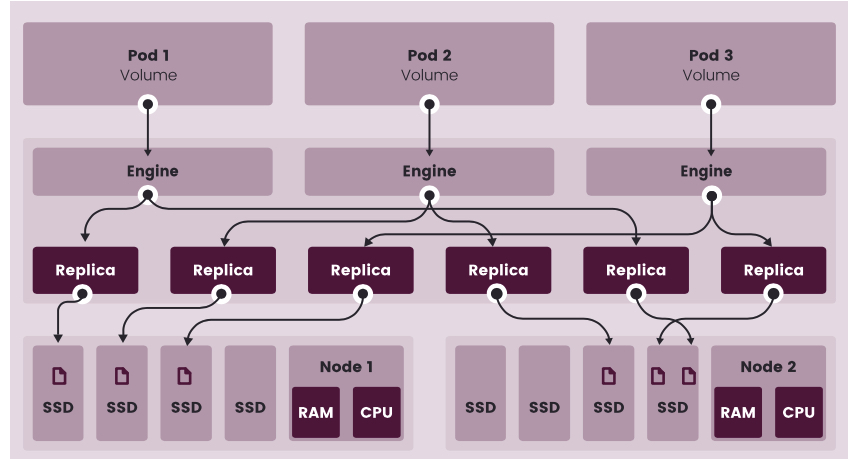Rancher Labs Longhorn Persistent Storage for Kubernetes Joining Cloud Native Computing Foundation as Sandbox Project
Donation demos firm's ongoing commitment to accelerating enterprise adoption of cloud-native technologies.
This is a Press Release edited by StorageNewsletter.com on November 6, 2019 at 2:36 pmRancher Labs, in Kubernetes management platform, announced The Cloud Native Computing Foundation (CNCF) has accepted its vendor-neutral container storage solution – Longhorn – as its latest Sandbox project.
How it works

Longhorn joins 20 other current projects and was accepted in recognition of the value it brings to the cloud-native ecosystem.
As enterprises increasingly look to use containers to manage stateful apps – any program that saves client data from the activities of one session for use in the next session – they require support for persistent storage. However, the market for persistent storage is still nascent with complexity and a lack of enterprise capabilities. Longhorn helps teams manage stateful workloads in Kubernetes by providing a solution for persistent storage that can be deployed while simplifying use and management.
Liz Rice, CNCF TOC Chair, commented: “Storage is an important area of the cloud native landscape, so I’m delighted that Rancher is contributing Longhorn to the CNCF. By becoming a CNCF Sandbox project, Longhorn can help the open source community accelerate the maturity of persistent block storage solutions for Kubernetes.“
Key capabilities of Longhorn (currently v0.6.2) include enterprise-grade distributed block storage, volume snapshots, built-in backup and restore, live upgrades without impacting running volumes, cross-cluster DR with defined RTO and RPO, one-click installation, and an intuitive user interface.
Deploying Longhorn as persistent storage for Kubernetes brings 3 benefits:
- Simplicity : Longhorn is much simpler than traditional storage software. It implements its enterprise-grade storage features with only 30,000 lines of Go code, including both the data plane (Longhorn engine) and the management plane (Longhorn manager). It is lightweight because Rancher builds on storage technologies that already exist in the Linux OS. The speed and capacity of storage hardware like SSD and NVMe also led to a simplified design.
- Easy-to-use : Most users interact with Longhorn through its free UI, and it exposes a storage class for easy provisioning of replicated volumes. It can be installed and upgraded with a few clicks, without needing to first read all of the documentation to understand every nuance. The UI not only offers visibility into storage volumes, but it also helps teams understand the Kubernetes workload that created the volume.
- Built-in multi-cluster backup and DR : Longhorn protects data at multiple levels. As enterprise-grade distributed storage, it replicates data synchronously across multiple nodes. Users can create snapshots directly in primary storage and revert to previous snapshots from the UI. They can also make backups of snapshots to secondary storage and recover the volume to the same cluster or a different one. Users can even create a read-only asynchronous replica in a different cluster, making it possible to quickly recover data and the application in case of a cluster failure.
Sheng Liang, CEO, Rancher said: “Longhorn’s contribution to the CNCF represents Rancher’s long-term commitment to the wider cloud-native eco-system and the Kubernetes community in particular. We’re indebted to the thousands of users who have already experimented with Longhorn and have provided valuable feedback over the years. Becoming a CNCF project will increase the awareness of Longhorn and accelerate its development velocity.“
For more information about Longhorn visit the project page on Github. If you’re using Rancher 2.x, you can find Longhorn in the Rancher App Catalog. It only takes a couple of clicks to install it from there. For other platforms, the project page on Github includes instructions to install Longhorn via Helm or through direct YAML manifests.












 Subscribe to our free daily newsletter
Subscribe to our free daily newsletter
